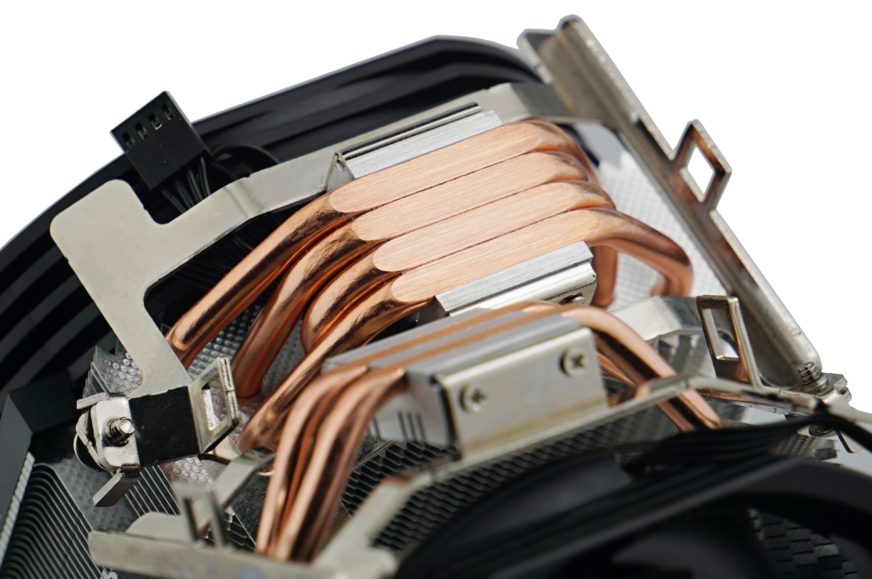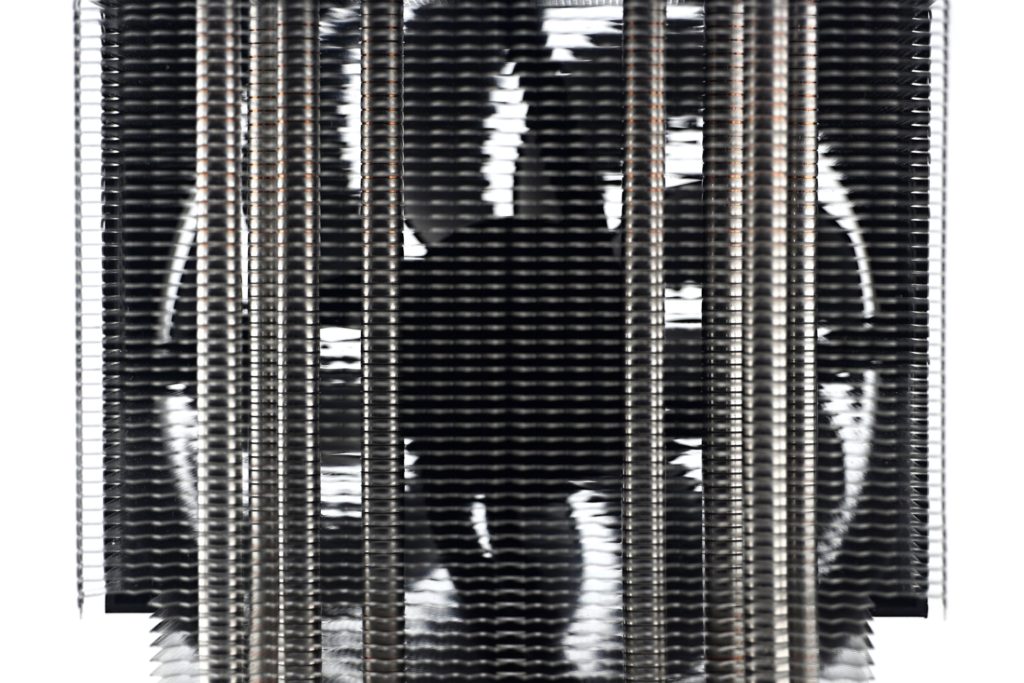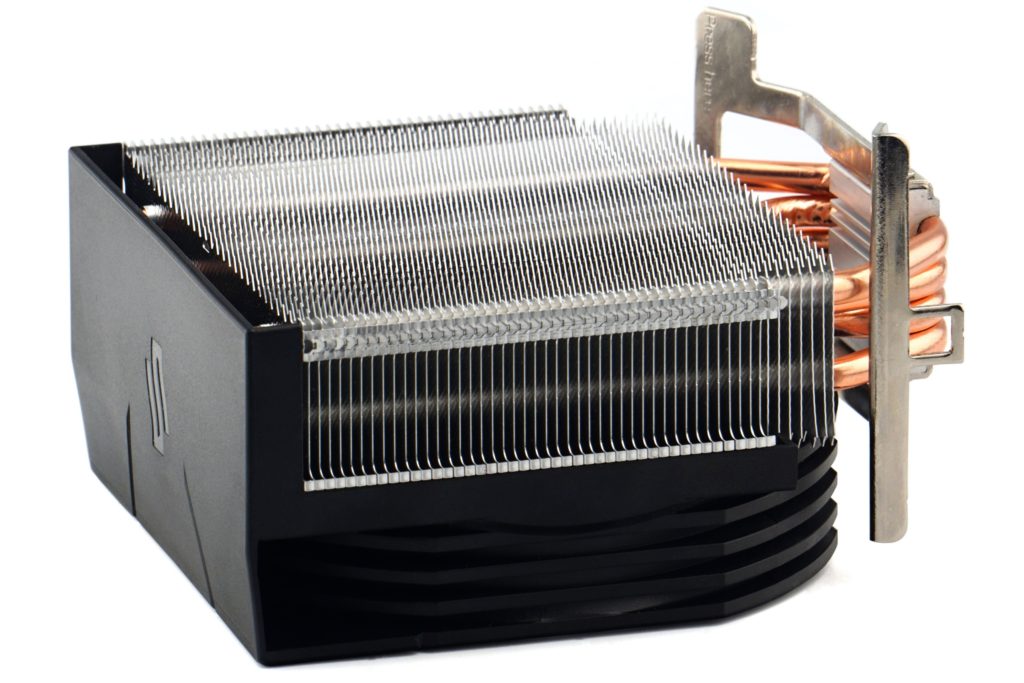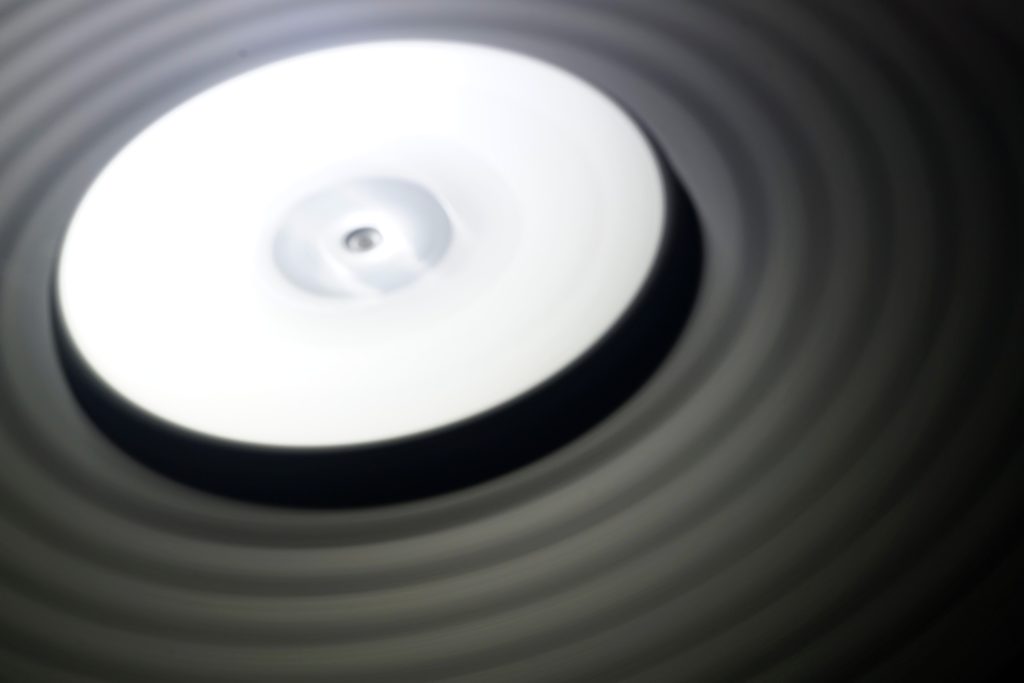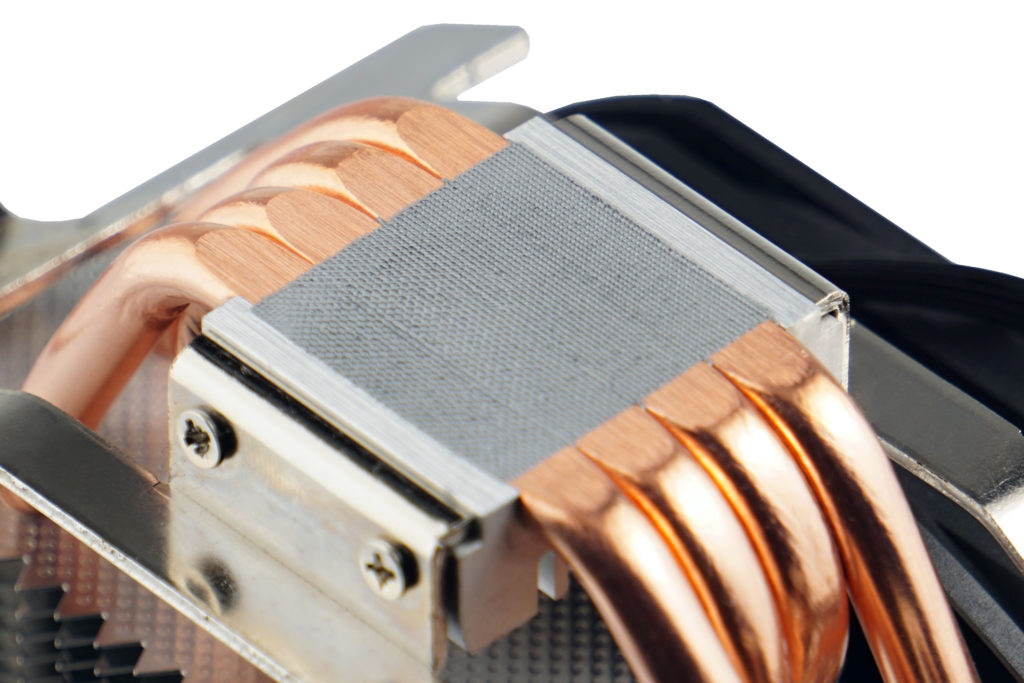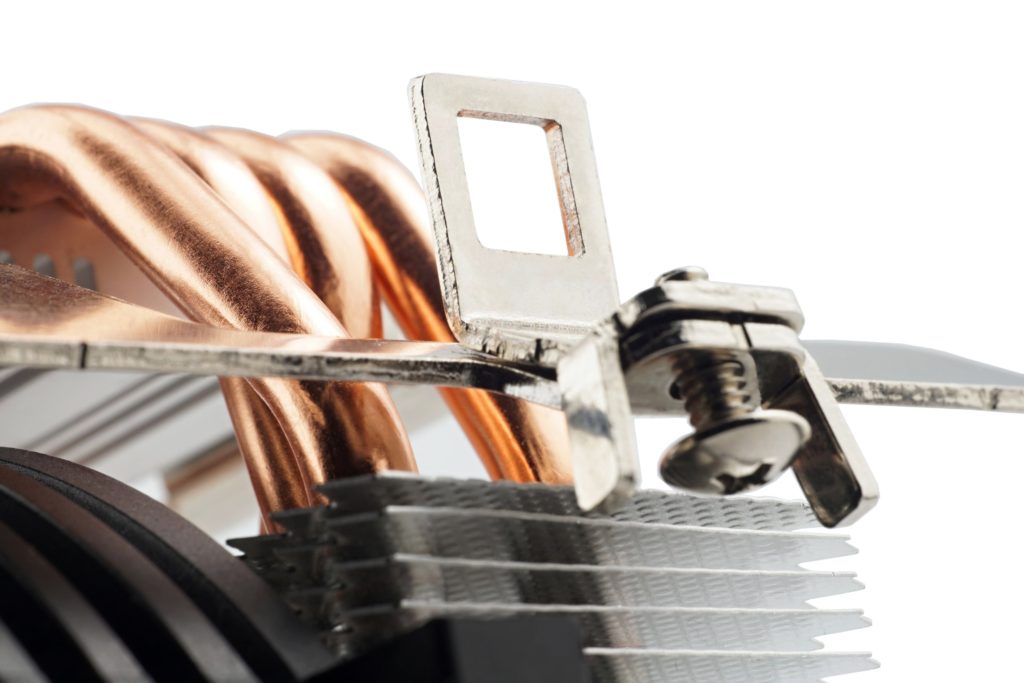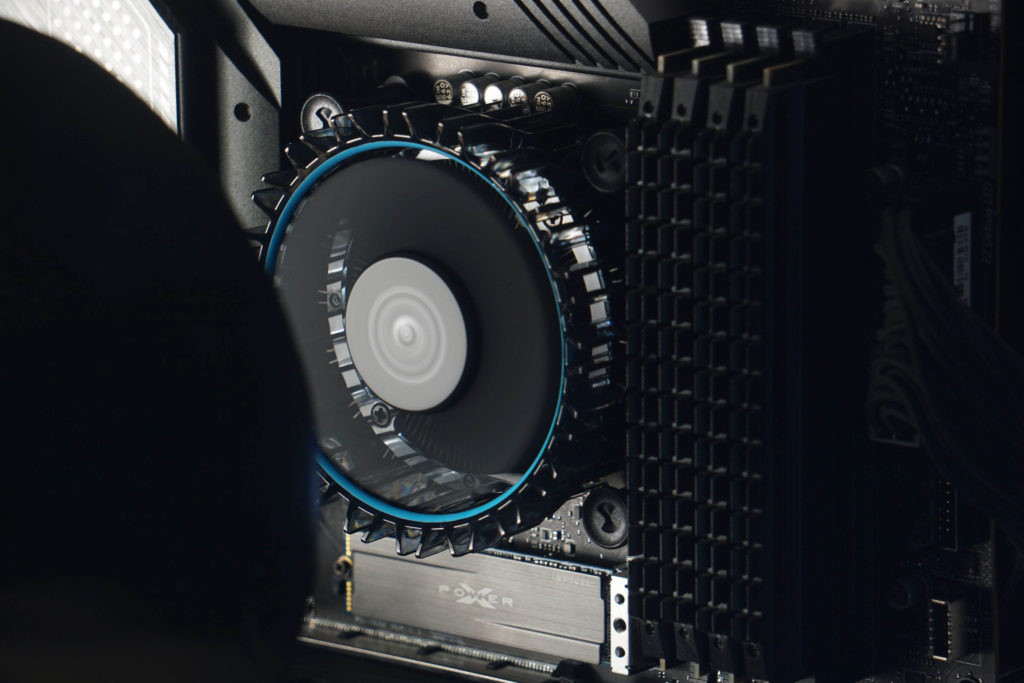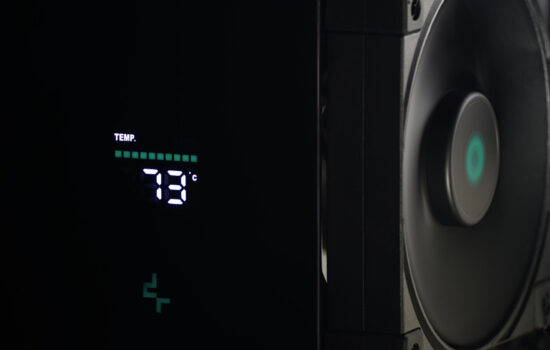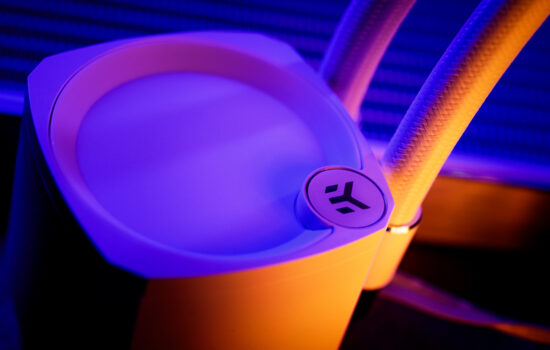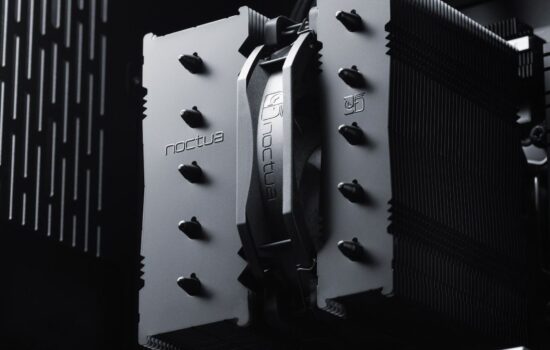The SilentiumPC Spartan 5 Max cooler in detail
The SilentiumPC Spartan 5 cooler with the “Max” attribute differs from, say, the basic variant only by having twice as many heatpipes. So four instead of two. The other elements are the same, so naturally the question comes to how much the two added heatpipes, which the more expensive SPC cooler has in addition, will increase the cooling efficiency. By quite a bit, or by nothing at all – depending on the processor used.
The fifth generation of SilentiumPC Spartan coolers finally uses 120 mm fans across all models. So it’s no longer the case that Max in the name means a larger heatsink with a larger fan. In the case of the Spartan 5 coolers, the “Max” designation refers to a higher (maximum) TDP. While the Spartan 5 (SPC320) has a cooling capacity of 160 W, the Spartan 5 Max (SPC322) has up to 180 W.
But don’t be fooled. It doesn’t automatically mean you get more headroom for lower revs and quieter operation. The claim made by tests of the cheaper Spartan 5 model holds true – the Spartan 5’s power is often all you need. This also applies to the Spartan 5 Max, which, however, with the right processor, has its justification.
The SilentiumPC Spartan 5 Max cooler in detail
The dimensions of the Spartan 5 Max are identical to the Spartan 5 – 146 × 125 × 65 mm. It is still a relatively low tower cooler with above-standard compatibility. And that’s true both with slimmer cases and with memory modules, above whose slots the cooler doesn’t extend with a width of only 65 mm (together with the fan).
The weight (490 g) of the Spartan 5 Max is higher though. The extra two heatpipes compared to the Spartan 5 make an increase of 45 g. When incorporating these two additional heat pipes, the attempt was to position them to make the most even use of the available heatsink area. On the two-pipe Spartan 5 this was fairly straightforward and the two ‘U’ bent pipes intersect the fins one behind the other.
The Spartan 5 Max no longer has any pipes in a row behind each other. While they are all concentrated behind the fan blades where the dynamic pressure is highest, they are spaced as far apart as possible. If they were lined-up, as they are on some older coolers, they would be too close together and not used to their maximum potential. Heatpipes thus keep as much spacing as possible (7–12 mm) in the effective band, and they keep at least 6 mm of edge clearance from the edges of the fins as well. With respect to reaching as large an area as possible, this design probably cannot get much more efficient than it already is.
More heatpipes, but smaller radiation area. It doesn’t seem like it, but more than 118 cm2 must have been used for the passage for the two pipes (this value does not include the enlargement of the area by fine pressing, after which the small protrusions that characterize the surface of the aluminium fins were formed).
The long edges of the heatsink have triangular cut-outs to reduce mechanical resistance, which helps to reduce noise. Similar cut-outs, but with rounder edges, are also on the fan blades. TWe have already covered this in detail in the Fluctus 120 PWM tests. This modification spreads the sound over a wider range of frequencies, making the fan more comfortable at the same level of average sound pressure in dBA.
But there is still a little bit missing to perfection. While some peaks have been removed, the most intense are the lower, rumblier frequencies between 130–200 Hz. Apparently SilentiumPC is also aware of these, as the cutouts on the newer 140 mm fan (also used on the Fortis 5 coolers) are significantly smaller and will definitely sound different.
The thermal paste is Pactum PT-3 – single-use, pre-installed on the base. You will not find a replacement (in tube or pouch) in the accessories. The base is of the DHT type, i.e. with direct contact of the truncated tubes with the processor’s heat spreader. The tubes are contact pressed one on top of the other and there is no filler used, under which there would be higher temperature. The heat dissipation rate will therefore be at a similar level to that of coolers with copper blocks.
The mounting of the cooler to the motherboards is always via a clip to the frame around the CPU socket. On AMD platforms (AM4, AM3/+, AM2/+, FM2/+ and FM1 are supported) this is done with brackets that are already on the boards. On Intel LGA (1700, 1200 and 115x), a circular frame needs to be installed. How to do it, we described in the test of the cheaper cooler Spartan 5, nothing changes here.
Apart from the subtler mechanism compared to the backplate mounting, everything is comfortable, even the safety lock itself. To avoid having to pinch and bend anything, there is a screw on the clasp to loosen the eyelet. You loosen the screw, sink the eyelet under the hook of the frame, and then tighten the screw properly (to the stop) to make the pressure as strong as possible with the most intense heat transfer.
Methodology
The coolers are tested at maximum output and at lower speeds corresponding to fixed noise levels of 45, 42, 39, 36, 33 and 31 dBA. Noise levels are measured with a Reed R8080 noise meter (with a parabolic collar to increase sensitivity) at a distance of 15 centimetres from the sound source (fan).
Measurements are done traditionally in our wind tunnel, with two 500-rpm Noctua NF-S12A PWM fans at the intake and an equal number of these fans at the exhaust. The intake air temperature (21-21.1 °C) is constant, properly controlled throughout the testing. The tests run on an Intel Core i5-12400 with stepping H0 (i.e., a variant with the smaller core, which Core i3s, Pentiums, and Celerons also have). This, without power-limits (average CPU power draw is then around 93 W) and with PL2 limited to the TDP level (65 W). We simulate the load in Cinebench R23, the test motherboard is MSI MAG Z690 Tomahawk WiFi DDR4.In addition to CPU temperatures, we also pull the MOS and CPU socket sensor temperatures from the log into the graphs. So the results also show how the fan, in addition to the heatsink, also cools the surrounding area of the socket with components that heat up to critical values.
- Contents
- The SilentiumPC Spartan 5 Max cooler in detail
- Results: Maximum performance
- Results: Higher performance (45 dBA)
- Results: Medium performance (42 dBA)
- Results: Lower noise level (39 dBA)
- Results: Low noise level (36 dBA)
- Results: Very low noise level (33 dBA)
- Results: Audibility threshold (31 dBA)
- Conclusion





